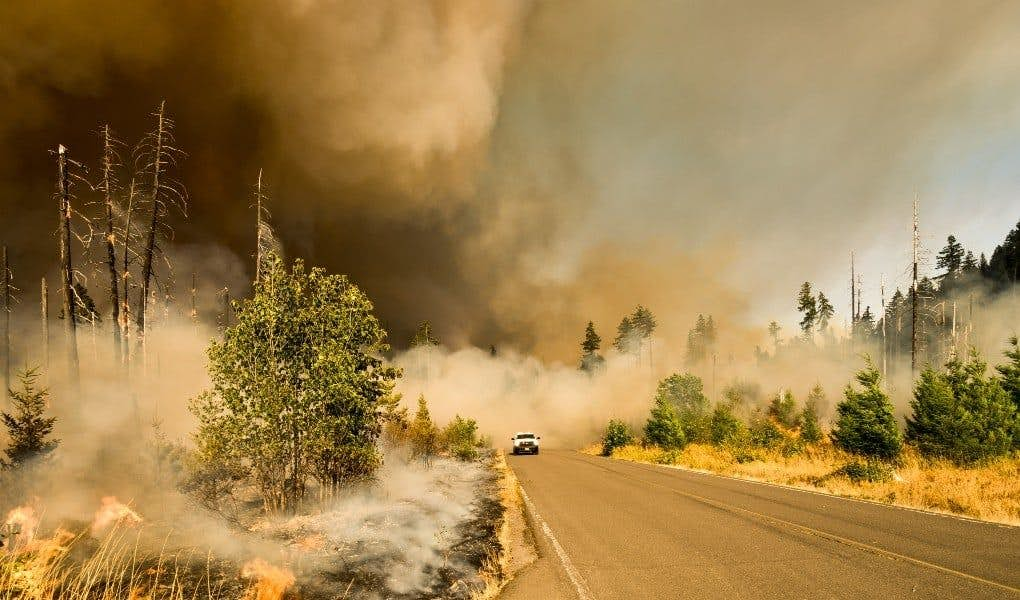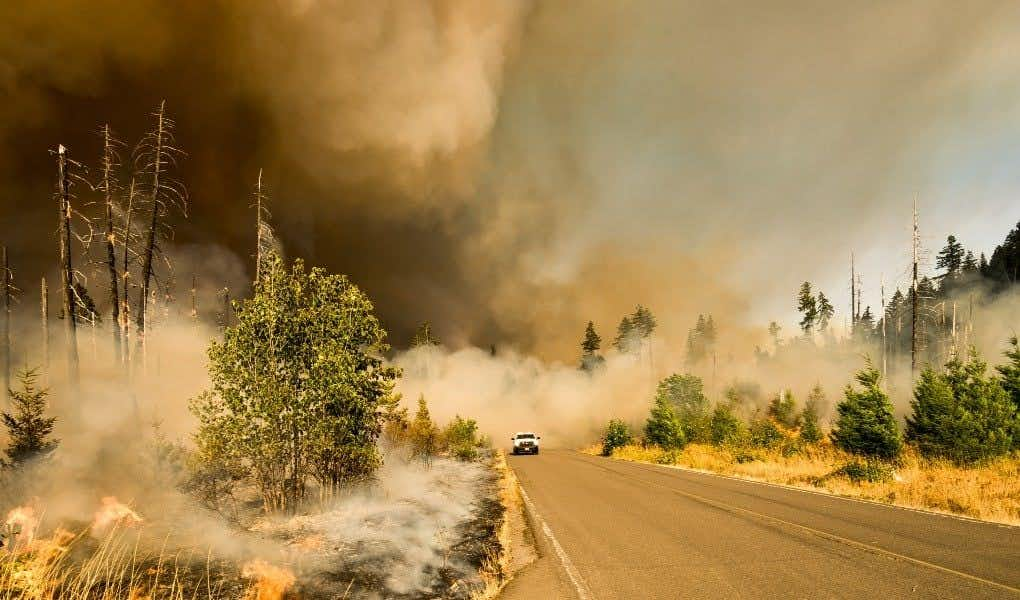The Marshall fire in Colorado ignited on December 30, 2021 and rapidly spread across three cities. The cause of the fire is currently under investigation. The fire is the state’s most destructive fire in terms of property damage.
So far, investigators are exploring different causes, ranging from downed power lines, human activity, and underground coal fires. With multiple possibilities emerging as the investigation continues, the potential for litigation—ranging from insurance claims to criminal charges at stake—is high.
What Happened?
Beginning the day prior, the National Weather Service in Boulder, Colorado issued alerts concerning the possibility of strong winds in and near the foothills area due to a mountain wave set up. A strong wind event reaching 75 mph was predicted to occur. Strong winds flew from the mountains located at the Continental Divide. The following morning, weather forecasters issued a high wind warning for the foothills and adjacent plains to the west of Denver. The warning came after a combination of several weather factors indicated that the mountain wave pattern could amplify. The mountain wave pattern could also produce winds stronger than initially expected. By mid-morning, winds reached 100 mph across Jefferson and Boulder counties, creating an extreme wind event. A variety of atmospheric conditions caused the extreme wind event.
It was within the context of such an extreme wind event that a fire began in the Marshall Mesa area. This location is an open area surrounding Marshall Lake. Due to the extreme wind, the fire rapidly spread to parts of unincorporated Boulder County, Superior, and Louisville. As such, tens of thousands of residents had to evacuate. The Marshall fire in Colorado destroyed more than 1,000 homes, including entire subdivisions and about 9% of the housing in Superior. The subdivision of Sagamore, and all of its 171 houses, burned to the ground in minutes. The death toll remains unclear, as there are two people reported as missing and partial human remains found of another. The most recent assessment has estimated that the fire caused over $513 million in property damage.
Potential Causes of the Marshall Fire in Colorado
When the fire first began, there were reports that it likely started from downed power lines. The first firefighter to arrive told dispatchers that a power line was hanging low across the road. Moreover, the firefighter did not report any flames. The firefighter requested the energy company be dispatched to repair the line. However, the company that appeared on the scene found no downed lines. The area’s largest telecommunications providers also advised that none of their wires were down in the immediate area of where the fire began.
After the fire was contained, the Federal Bureau of Investigation and the Bureau of Alcohol, Tobacco, Firearms, and Explosives became involved in the investigation. The authorities executed a search warrant and seized control over a property owned by Twelve Tribes, a fringe Christian sect. This occurred after two witnesses said they saw fire on or near the Twelve Tribes property at and around the time the fire ignited. On the morning of the fire, a Twitter user posted a video of something burning—possibly a structure—in the Twelve Tribes area. The user filmed the video approximately 24 minutes after the initial report and nine minutes after firefighters responded to the scene.
Coal Mine Fire
Whether an underground coal mine fire could have ignited the fire is another issue that investigators are examining. Underground fires can begin in the coal seams and spontaneously erupt, triggering aboveground fires. A similar eruption happened back in 2002, in the area near Glenwood Springs, which burned 29 homes. As a result, state regulators actively monitor coal fires. State regulators are currently monitoring 38 ongoing coal fires throughout Colorado. Two of these 38 coal fires are near the area of the Marshall fire in Colorado. There has not been much up-to-date information concerning these fires. However, a 2018 report by the Colorado Department of Natural Resources Division of Mining Reclamation Safety classified the fires as low activity and as posing a low safety risk.
The Environment
Environmental factors, such as dry conditions and unseasonably warm temperatures, may also have been a culprit. These factors may have intensified the fire and created the strong winds that carried it. The winds were the cause of the spread of the fire. However, fire division officials stated that the extreme wind before the fire has complicated their understanding of the fire’s development. The extreme wind also impacted the identification of the ignition source.
Human Factors
If human activity or error caused the fire, it is very likely that those responsible will face litigation. In the Marshall fire, it remains unclear whether there was, in fact, a downed power line. However, if such is the case, the company responsible for those lines could be liable. For example, a faulty transmission line caused the Kindcade fire in Sonoma County, California, which burned over 77,000 acres. Then, this past year, Pacific Gas & Electric agreed to pay $125 million in fines as part of a settlement agreement.
In addition, Sagamore residents have expressed concern over the town’s response to the fire. Residents claimed they never received evacuation alerts. Furthermore, residents claimed that responding firefighters did not use sirens or megaphones to alert them of the need to evacuate. There have also been reports that the fire hydrants in the area were dry. Officials have announced that a formal analysis is underway concerning their response to the fire.
There are also various insurance concerns that could lead to litigation. A number of the affected residents have expressed that they are underinsured to cover the extent of the damages.
Lastly, criminal charges are possible as well, with the Boulder County Sheriff indicating that investigations are still ongoing. As one former district attorney of Boulder County, Stan Garnett, opined, “In terms of criminal, the issue is going to be is it a misdemeanor or a felony? And that’s going to depend on how intentional was the behavior or how careless or negligent was it that actually started the fire, if it’s human-caused.”
How Can the Experts Help?
Whether determining the civil liability or criminal culpability of the fire’s ignition source, attorneys will undoubtedly need various experts. Fire investigators are currently working to figure out how the fire had started and spread so rapidly. This requires an examination of the burning of various objects to determine how the fire moved. Because large fires cover more area, they take more time to investigate. However, fire investigation experts are not always able to determine a sole cause. Colorado investigators failed to determine who created the initial spark in more than half of the state’s largest fires between 2000 and 2018.
While fire investigation experts are a necessary start in determining the cause, wildlife and forestry experts can also help. These experts can ascertain how the fire spread in its specific environmental conditions. For example, state forest scientists can rank the burn probability of open space. Some such scientists have already deemed the open space surrounding Marshall Lake as “very high.”
In 2017, for example, the Colorado State Forest Service released its Wildfire Risk Assessment Update. The update indicated that more than half of the state’s residents lived in areas prone to fire. Amanda West Fordham, the associate director of science and data for the Colorado State Forest Service, has indicated that they will soon begin an update to the report which would include a new measurement of how fires move within the wildland-urban interface. The results of the research would, in turn, potentially affect rules governing fire resistance, such as building codes and whether the current Marshall fire was the result of governmental failure to promulgate necessary rules.
Interestingly, as investigations continue, it appears several separate ignition points may have caused the Marshall fire in Colorado. As such, this will make liability that much more difficult to prove.




